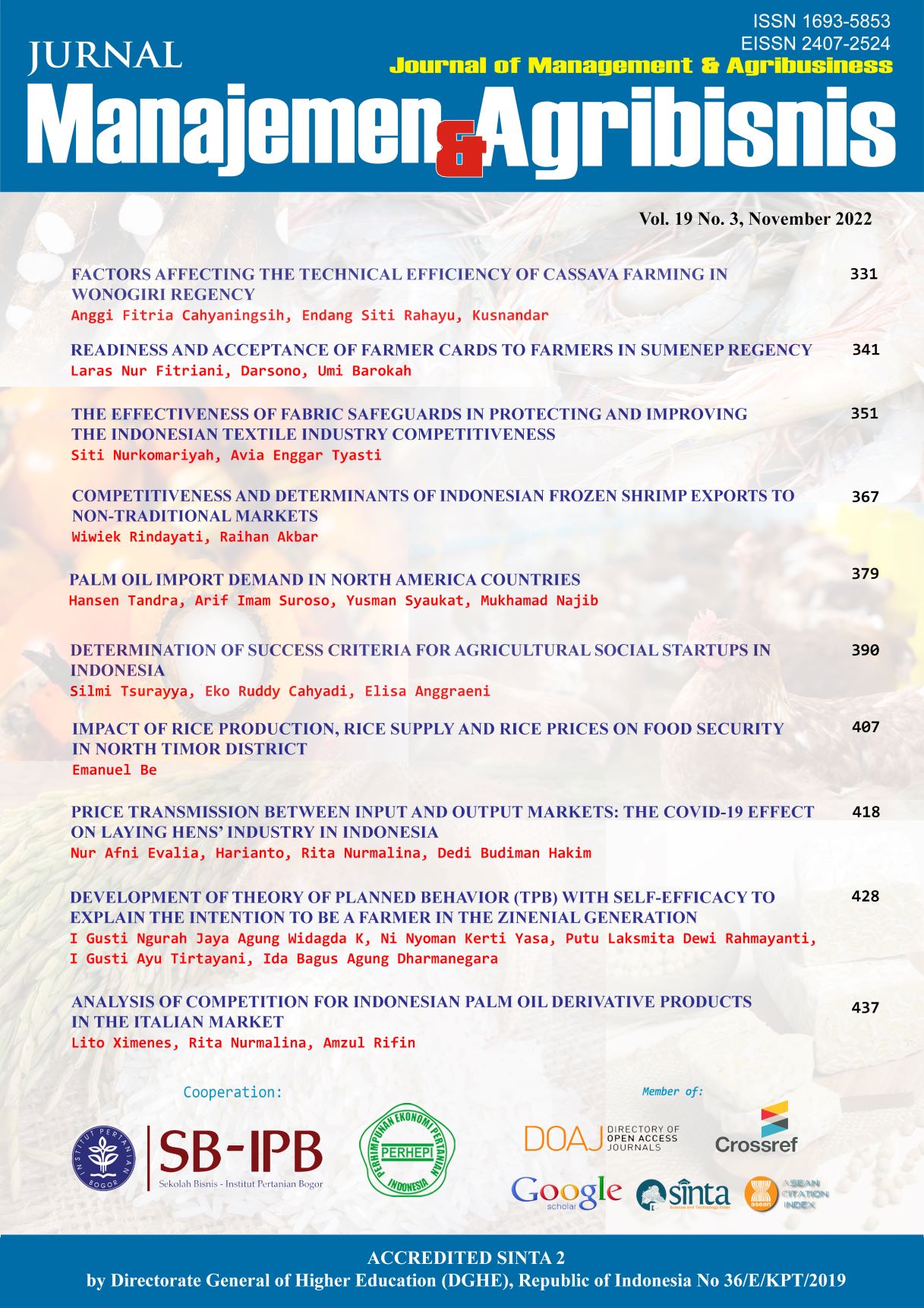Factors Affecting the Technical Efficiency of Cassava Farming in Wonogiri Regency
Abstract
Cassava is a potential commodity to develop because it is used for consumption and industrial raw materials. Wonogiri Regency has the highest harvest and production area in Central Java. Such a high production level is not comparable to a low level of productivity. The productivity of cassava in Wonogiri Regency is only 18.99 tons per hectare lower than the national productivity, which is 25.95 tons per hectare. Therefore, it is necessary to use inputs as an efficient resource to increase productivity. This study analyzed the technical efficiency and factors affecting the efficiency of cassava. Primary data from 75 cassava farmers in Wonogiri Regency. Data Envelopment Analysis (DEA) and regression Tobit were the data analysis methods. DEA results showed efficiency scores ranging from 0.107 to 1.28% of cassava farmers in Wonogiri were technically efficient in carrying variable return to scale, with an average score of 0.580. Cassava farmers in Wonogiri Regency should increase the efficiency value by reducing slack inputs, namely cassava seeds, phonska fertilizer, and urea fertilizer. Tobit regression results show that farmer education and group membership significantly affect the efficiency of cassava. Farmers with higher education have better skills to adopt new technologies and use inputs more efficiently. The farmer group has a positive influence because it can provide information and discussion to overcome the problem of cassava farming.
Keywords: cassava farming, DEA, efficiency, productivity, tobit regression
Authors
Authors who publish with this journal agree to the following terms:
- Authors retain copyright and grant the journal right of first publication with the work simultaneously licensed under a Creative Commons Attribution License that allows others to share the work with an acknowledgement of the work's authorship and initial publication in this journal.
- Authors are able to enter into separate, additional contractual arrangements for the non-exclusive distribution of the journal's published version of the work (e.g., post it to an institutional repository or publish it in a book), with an acknowledgement of its initial publication in this journal.
- Authors are permitted and encouraged to post their work online (e.g., in institutional repositories or on their website) prior to and during the submission process, as it can lead to productive exchanges, as well as earlier and greater citation of published work (See The Effect of Open Access).

